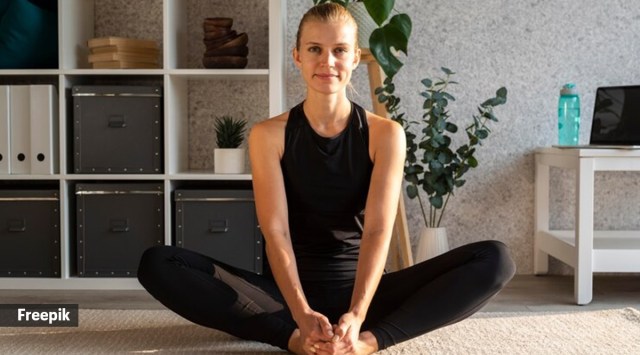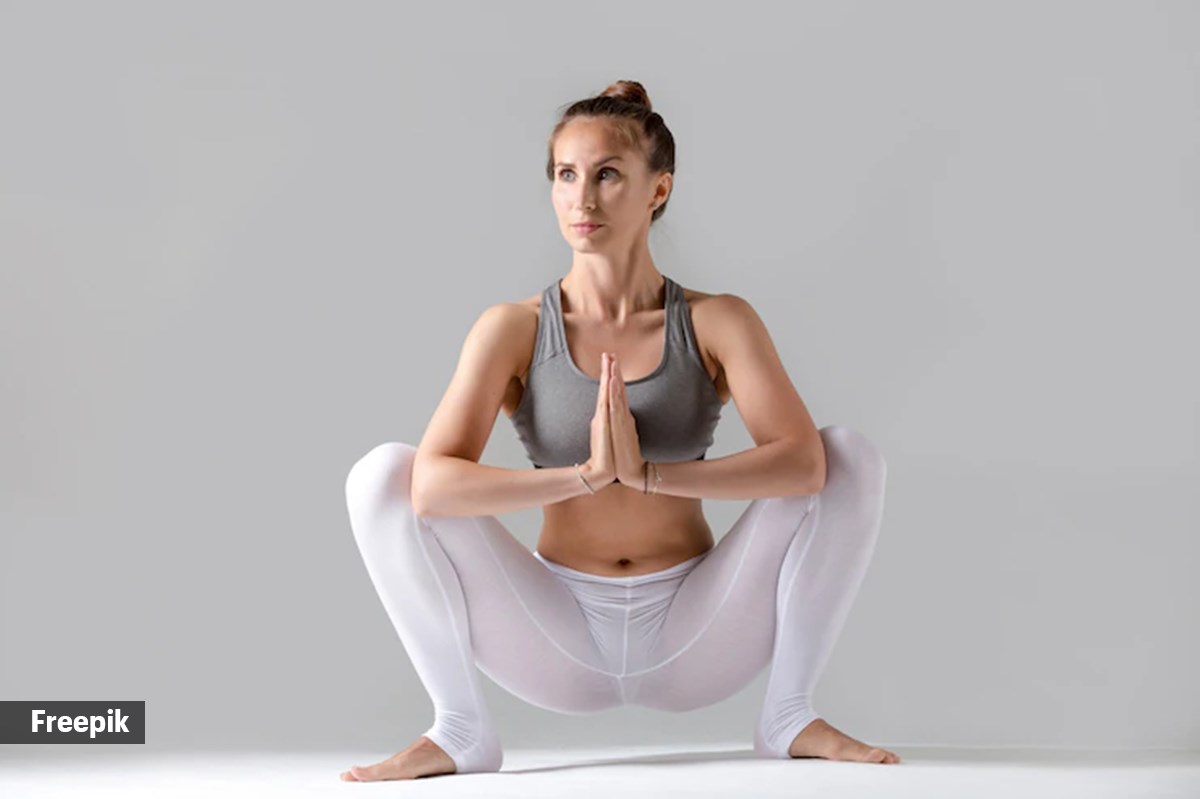📣 For more lifestyle news, click here to join our WhatsApp Channel and also follow us on Instagram
Deal with hangovers effectively with these five yoga asanas
Himalayan Siddhaa Akshar, Founder of Akshar Yoga Institutions said, "Yoga enables the development of balance between the mind and body link through the use of physical postures, breathing exercises, meditation and other approaches."
 While most of us reach to the medicine box or a glass of lemon water as a home remedy, there is a healthier antidote to it--yoga. (Source: Freepik)
While most of us reach to the medicine box or a glass of lemon water as a home remedy, there is a healthier antidote to it--yoga. (Source: Freepik)If you’ve ever experienced a hangover, or know someone who has, you would know definitely know that its nasty effects take a long time to wear off. While most of us reach out for the medicine box or a glass of lemon water as a home remedy, turns out there is a healthier antidote to it — yoga.
“Yoga enables the development of balance between the mind and body link through the use of physical postures, breathing exercises, meditation, and other approaches,” said Himalayan Siddhaa Akshar, founder of Akshar Yoga Institutions.
As such, today we are here with five yoga asanas that will help you deal with the hangovers in the most natural way, all thank to Sarvesh Shashi, the founder of Sarva Yoga Studios. Taking to Instagram, he wrote, “We all know someone who has experienced great effects of alcohol and the next morning experienced the not-so-great effects of alcohol. But yoga always comes to the rescue, if you know someone who needs to deal with hangovers, here are five asanas that will help you.”
View this post on Instagram
Balasana
Also known as “Child’s pose’, Balasana centres on creating a moment of rest. It is a major source of relief for stress and fatigue.
Steps:
*Kneel on the mat and sit on your heels.
*Raise your arms over your head. Inhale.
*Bend your upper body forward.
*Put your forehead on the floor. Your pelvis should rest on your heels.
*Make sure your back is not hunched.
According to Akshar, the pose helps release tension in the chest, back and shoulders, and promotes blood circulation throughout the body. However, pregnant women, people with high blood pressure or joint pain should avoid performing this asana.
Bitilasana-Marjaryasana
 This asana is great for relaxation as it facilitates deep inhalation and exhalation. (Source: Freepik)
This asana is great for relaxation as it facilitates deep inhalation and exhalation. (Source: Freepik)
The name Marjary and Bitila come from the Sanskrit script, where ‘marjari’ means ‘cat’ and ‘bitila’ means ‘cow’.
Steps:
*Get down on your knees, place palms under shoulders and knees under hips.
*Inhale, curve your spine to look up.
*Exhale, curve your spine to form an arch of the back and allow your neck to drop down.
*Focus your gaze towards your chest.
Akshar said, “This asana is great for relaxation as it facilitates deep inhalation and exhalation,” further suggesting pregnant women and people with a knee injury to avoid doing it.
Baddha Konasana
The Sanskrit name Baddha Konasana is the combination of three words: Baddha, Kona and Asana, which means Bound Angle Pose.
Steps:
*Fold your legs and bring the soles of your feet together.
*Bring your heels closer to your pelvis.
*Slowly push your knees down. Exhale all the air from your tummy.
*Lean your upper body forward.
*Place your forehead on the floor.
In case of groin or knee injury, only perform this pose with a blanket support under the outer thighs. Akshar noted that this asana helps relieve anxiety, depression and fatigue, soothes menstrual discomfort and sciatica, and helps relieve symptoms of menopause.
Malasana
 It aids in digestion, strengthens your metabolism and keeps your pelvic and hip joints healthy. (Source: Freepik)
It aids in digestion, strengthens your metabolism and keeps your pelvic and hip joints healthy. (Source: Freepik)
Malasana in Sanskrit is derived from two words, Mala which means “garland” and asana which means “pose”. However, the popular translation is quite different from its literal translation which is “impurity or dirt”.
Steps:
*Starting from a standing position with your arms by your sides, descend your pelvis over your heels by bending your knees.
*Make sure your feet are firmly planted on the ground.
*Raise your hands in a prayer position in front of your chest or place them on the floor next to your feet.
As per Akshar, it aids in digestion, strengthens metabolism and keeps your pelvic and hip joints healthy. However, one should avoid this pose if they have a knee or lower back injury.
Navasana
 The form of the body balanced on the buttocks is said to resemble a boat floating on the water, hence the name. (Source: Freepik)
The form of the body balanced on the buttocks is said to resemble a boat floating on the water, hence the name. (Source: Freepik)
Its name is derived from the Sanskrit words nava, which represents “boat”, and asana which signifies “posture”. The form of the body balanced on the buttocks is said to resemble a boat floating on the water, hence the name.
Steps:
*Start on your back. Take a deep breath in and gently exhale while trying to pull your feet and chest up at the same time and extend your arms towards your feet.
*Align your fingers, toes, and eyes. Maintain a balanced posture and keep your legs straight.
*To release, take a deep breath in and slowly exhale before returning to the starting posture.
*Attempt to maintain a one-minute hold while breathing normally.
*Try to hold this position for two to three breaths if you’re a beginner.
Akshar mentioned that this pose promotes weight loss, helps eliminate lethargy and gastrointestinal discomfort. It also maintains blood sugar levels and strengthens the abdominal muscles. However, the expert advisesdwomen to refrain from it during pregnancy and first two days of their menstrual cycle.
📣 For more lifestyle news, follow us on Instagram | Twitter | Facebook and don’t miss out on the latest updates!
📣 For more lifestyle news, click here to join our WhatsApp Channel and also follow us on Instagram



- 01
- 02
- 03
- 04
- 05
























